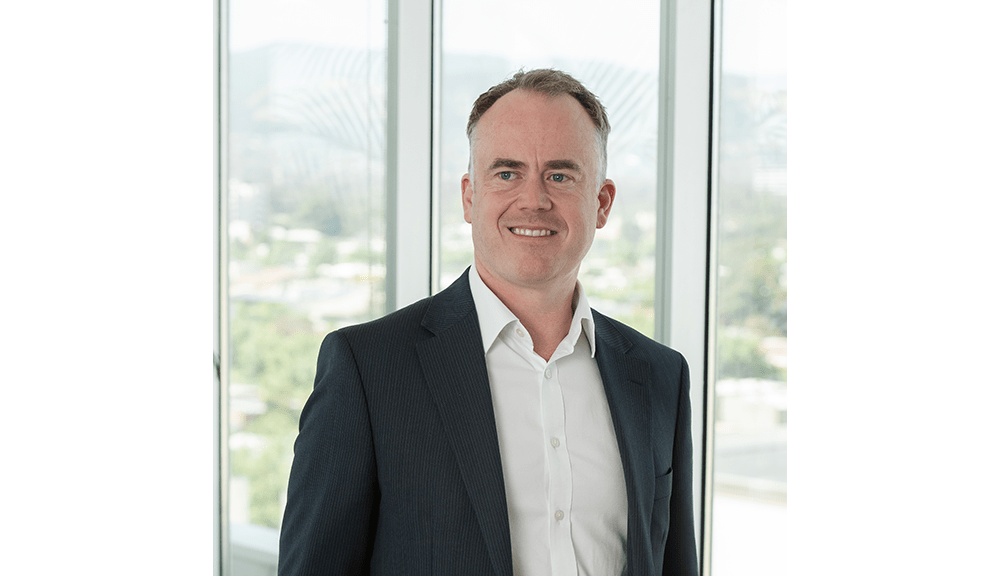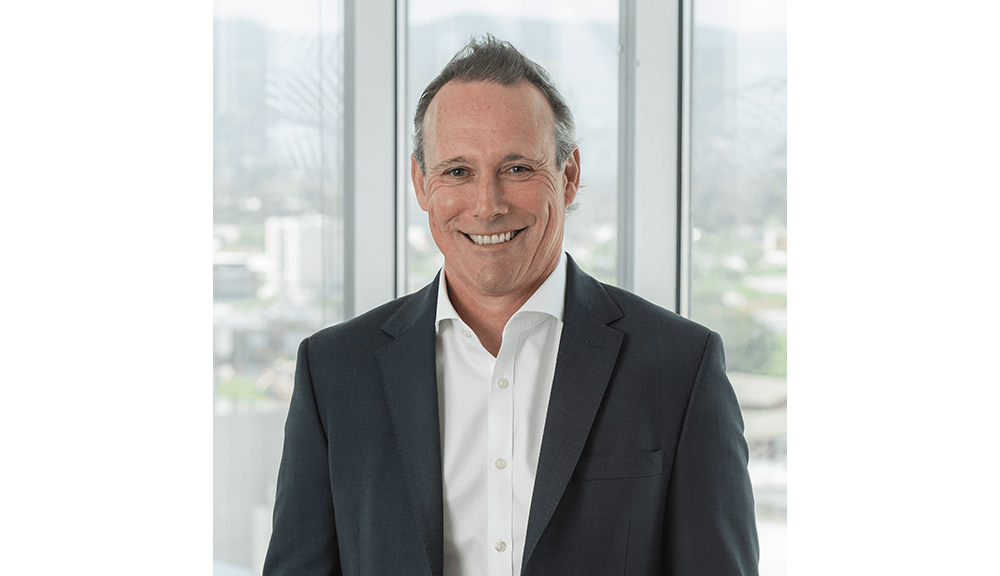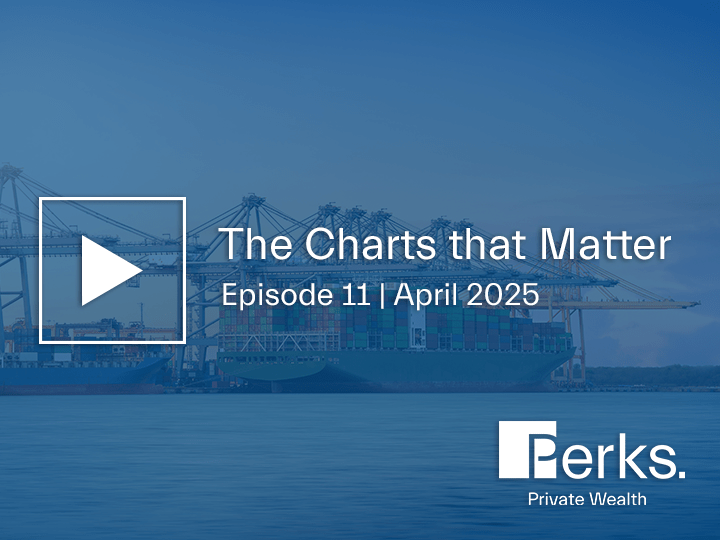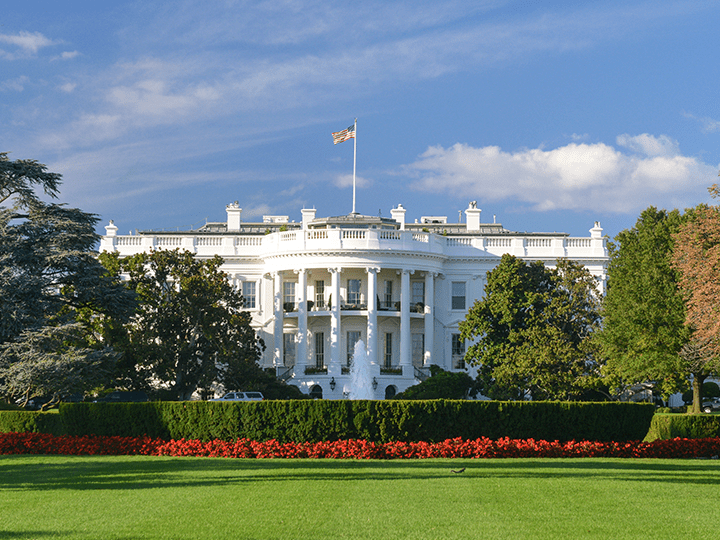Simon Wotherspoon:
Hi, everyone. And welcome to The Charts That Matter. I’m Simon Wotherspoon, one of the Perks Directors and Advisers. And I’m joined by Christo Hall. Christo is the chair of our Investment Committee. And today, I’m going to talk with him about markets, how we see things now and as we look forward. Christo, welcome.
Christo Hall:
Thanks, Simon. Good to be here.
Simon:
So it’s now well-understood that one of the key drivers, if not the key driver, of markets in 2022 has been inflation and rising interest rates. And we’ve heard a lot from the Federal Reserve in the US about inflation and their attempts to get on top of it, and so too here in Australia with our Reserve Bank lifting rates from 0.1% only in April this year up to 2.85%, as we sit here now.
Now, Christo, I wonder, is this just an Australian and US issue? Or is it more widespread? And where do we see rates going from here?
Christo:
Yeah, sure, Simon. No, it’s actually a global phenomenon. If you look at all the central banks around the world, around about 90% of central banks are now rising– or increasing their interest rates, which is material. So we haven’t seen that sort of collective rate rise behaviour for years.
Ironically, one of the major countries which isn’t putting their rates up is China, which we’ll talk more about later on. But as far as where rates head from here, we’re still in a rising rate environment, both in Australia and the US. And I’d expect that we’d start to see that come to its conclusion around about April to June next year. But certainly, the magnitude of rate rises from both countries is going to begin to moderate as inflation expectations begin to moderate from high levels.
Simon:
So is there a light at the end of the tunnel as far as inflation is concerned? Is there evidence that we’re sort of nearing some sort of peak, do you think?
Yeah, there definitely is evidence that we’re peaking. I mean, certainly if you look at some of the charts that we include in our pack, you can see that if you look back at periods in the last 40 years, we’ve had high, high inflation rates. They’ve unwound pretty quickly. And my expectation is that’s going to be the case this time around, as we begin to open up the economies and the supply side begins to open up again.
And some of the indicators that we look at, such as shipping rate pricing, which is a really, really good lead indicator– those prices have really started to fall quite dramatically in the last three months. So that obviously will take pressure off inflation. And also, another key indicator is just looking at what companies are looking to do in the next few months, what are their pricing intentions.
And if you look at the surveys that are coming out, they’ve certainly rolled over as well. So we’re not seeing the same level of price expectations being voiced by companies we were even six months ago. So all of those factors will take the pressure off inflation going forward.
Simon:
So inflation’s nearing a peak and likely to roll over, but presumably going to settle higher than it was prior to the recent burst. What do you say has been the broader impact on economies and markets, etc. of that settling higher?
Christo:
So I think a really important point to make is we’ve probably seen the days of what I call hyper-globalization coming to an end. And a lot of that is based on geopolitical reasons. So as a consequence of that, you’re going to see countries want to have a lot of their supply side manufacturing, for example, based obviously at home.
And what that’s going to mean is because of our wage structures in developed countries, we’re no longer going to (be) the cheapest source of supply. It means that inflation, in my view, is going to– it will retrace, but it’s going to settle longer term at a higher level than we’ve seen historically. So instead of going down to perhaps 1.5% to 2%, 2.5%, we may settle at around about 3%, 3.5%. And as I said, that’s more kind of structural, longer term.
And why that’s important is that will have ramifications to where interest rates settle once they start reducing again. And that will end up being at a higher rate than we’ve seen in the past, over the last 10 years especially. That is going to have a bearing on the return of all asset classes.
So that means, to me, that it’s going to be more subdued right across the board than we’ve seen, particularly in the last 15 years when we had all of the central bank intervention and all the liquidity that was being injected, firstly from the GFC, and then obviously to fight COVID. So I think that clients need to be mindful that when they’re looking at their portfolios, you’ve got to look at the relative returns from each asset class, but we’re not going to see the heady returns we’ve seen over the last decade, in my view.
Simon:
People will be interested to know a bit about property. Most people own property or at least live (in and) rent one. And interest rates certainly have an impact on that. How do you see the property market as we look forward?
Christo:
Yes, so I think there’ll be a chart in the pack showing this, but the property market in Australia has already started to roll over, particularly in Sydney and Melbourne. I think Sydney’s up about 8%, Melbourne probably a little bit less– 7% or thereabouts. Adelaide is just starting to roll over, so we haven’t seen that yet. And Adelaide is a market, which is always the last to rally and the last to start to decline.
So I think that that trend is going to continue. I mean, my view is that we’ll see Sydney prices in Melbourne and Sydney come back between 15% and 20% by the time– from peak to trough, and by the time we go through this rate rise cycle. Adelaide, not so bad on things, 7% to 10% is going to be more than magnitude there, given the make-up of the market.
But certainly, what we’re seeing now is the interest rate effect just beginning to affect the households. So normally, it takes about three months when the Reserve Bank announces they’re going to put interest rates up to flowing through to the banks actually notifying clients that rate rises are coming, and then it actually hitting your mortgage payment structure going forward.
We still haven’t really seen the consequences of the beginnings of the rate rise that we’ve had going back around eight or nine months ago. We’ve probably only seen a third of the impact so far. So that’s to come, more to come. And that will have an impact on consumer spending and demand.
But again, that is part of the fact that we should see eventually a slowdown in inflation because that demand that we’ve seen, that pent up demand is just not going to be there, given that obviously the cost of living is heading up at a decent clip and mortgages are– mortgages are starting to rise with it. So it’s going to be a bit of a challenging period.
Simon:
So we’ve talked about inflation nearing a peak, if not out of peak, interest rates going to continue to rise, but ultimately peak and ebb off. And it’s going to be difficult for markets, certainly property markets, et cetera. But there’s some relief, as interest rates start to moderate their rises. Shall investors be rushing back into markets? And if not, where might investors put their money?
Christo:
Yeah, so normally– obviously, the markets are about 12 to 18 months ahead. So the markets are starting to factor in this difficult period we’ve been going through with high inflation and high interest rates. For me, the bond market, the fixed interest market is starting to look really interesting now.
So I think we’ve seen a lot of inflation expectations already priced into bond markets, particularly at the quality end, what we call the quality end, which is things like government bonds and semi-government bonds. And also parts of the investment grade credit, that’s starting to show some real signs of value.
And you have to put this into context. The fixed interest market or the bond market– particularly, the 10-year bonds have had their worst period in decades. So normally, when you have recessionary periods, the normal return is negative 8% to 10% for bonds, where we’ve seen a negative 20% print, which is pretty significant. So on a risk basis, to me, they look the most attractive right now.
The equity side or the share side is still to come. And we’ve just done a period right now of another bear market rally. It’s the fifth one we’ve seen this year. So they’re very common. Markets just don’t fall over, bottom and then go back up again.
What we’ve seen is the de-rating of valuation multiples from higher interest rates. We’re yet to see the full decline in earnings, company earnings expectations. That’s begun. And that is going to be quite meaningful from all of these impacts of inflation and a slowing demand profile.
So I don’t think the market’s going to price that in until we get around to that March-April level of 2023. And that’s when I think the equity market’s going to start looking more attractive. So fixed interest now, that looks really appealing. And I think the share market will look more appealing. Particularly international, I should stress that because the Australian share market’s performed relatively really, really well compared to other markets. So I think that the– and we’ve been calling that. We’ve been preferring domestic equities over international equities. But I think the opportunity is going to be in the international side, as we reach that time frame.
Simon:
So Christo, bonds are attractive now, equities perhaps a bit later– March, April. What do investors need to look for, for signals that equities are now bottoming out?
Christo:
So normally, history has shown that when the central banks are about 80% through their rate rises, that’s when the markets will start to recover. And I think that it kind of matches up with our view as to when we see markets bottoming. And the first sign is that the magnitude of the rate rises starts to reduce, which we’re starting to see signs of here.
So that’s the thing to watch the most, when you’ve got an economic crisis, you’re working your way through. And it’s important to remember that markets always recover. So it’s been a torrid time after what has been a fantastic time in the markets. But it’s not all a one way street.
But ultimately, markets have been going up for 100 years. And there’s going to be some great opportunities that present themselves going into next year for the long term. And I think investors should be getting prepared that the time is fast approaching.
Simon:
Is there anything else that investors should be focused on as we move into the new year and anything of interest that we need to be watching?
Christo:
So I think the big interest for Australia is going to be China. And we’re starting to see some demonstrations now because the COVID policies in China really start to ramp up. And Xi Jinping will be very mindful of that because the consequence of those COVID lockups, firstly, is that economic growth has really collapsed in China. And that is not sustainable because of the unrest that it causes.
You’re seeing signs of that. But that’s more obviously from the lockdowns. But the people aren’t going to tolerate very poor economic growth conditions for too long. So what that will mean, from my perspective, is we’ll start to see a loosening up of the COVID restrictions, which will be good for starting to see economic activity recover.
And B, you’ll start to see some more stimulus coming through the pipe in China, through the banking system, just to loosen up their very tight lending standards that we’ve seen there. And again, that will encourage more activity to begin to accelerate, which will start the recovery process. And Australia is so interlinked with China, more so than any other country in the world economically. That should obviously help us, as they begin their recovery journey.
Simon:
Excellent. Well, great, Christo. Thanks very much for joining us. And thanks, everyone, for joining us in The Charts That Matter.
Christo:
Thanks.








